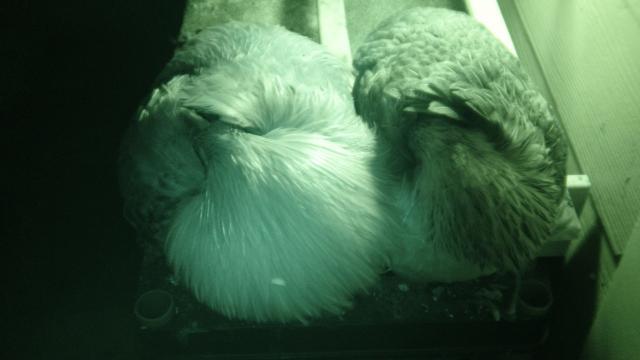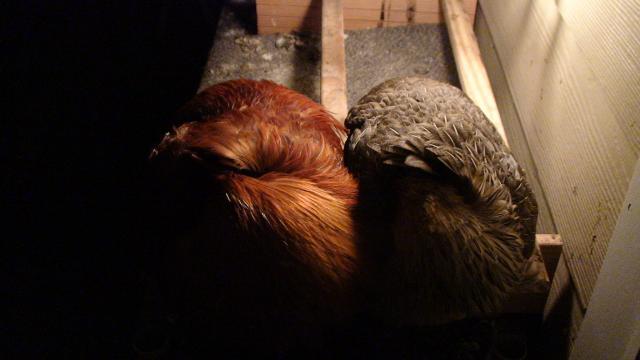I live in southern NH. Compared to the family home in MN, I consider this area mild. However, it's getting down to 10 degrees F this week and the average low in January is 9 degrees F with an average high of 30 degrees. Last winter we had snaps with below zero lows. Balmy compared to back home, but I'm given to understand this is considered pretty frigid by most of the country.
So far I've only had hens and a pea comb cockrel, so not anything I've really had to worry about with frostbite. I wanted to breed a heritage breed for meat and I have 25 red dorkings reserved to arrive this spring. They're just perfect for what we want and if I'm going to devote years to a self sustaining flock, I might as well pick a breed that could use the attention. They're listed as being very cold hardy but have a single comb. This means I'm going to have some single comb roosters to keep over the winter in the future.
Am I setting myself up for heart break? Is it going to be a full time job keeping the boys safe from frostbite? Do I need to consider changing my selection to a different breed? No other breed quite matches our situation as well as the dorkings, aside from this one little issue. I see that single combs are more prone to frostbite in the winter, but it's all very vague. I'm hoping to hear from others that keep single comb roosters in the more frigid parts of the world. Since exhibition is in my plans, I want to hear how hard it will be to get these boys through the winter with their combs intact.
Thanks!
So far I've only had hens and a pea comb cockrel, so not anything I've really had to worry about with frostbite. I wanted to breed a heritage breed for meat and I have 25 red dorkings reserved to arrive this spring. They're just perfect for what we want and if I'm going to devote years to a self sustaining flock, I might as well pick a breed that could use the attention. They're listed as being very cold hardy but have a single comb. This means I'm going to have some single comb roosters to keep over the winter in the future.
Am I setting myself up for heart break? Is it going to be a full time job keeping the boys safe from frostbite? Do I need to consider changing my selection to a different breed? No other breed quite matches our situation as well as the dorkings, aside from this one little issue. I see that single combs are more prone to frostbite in the winter, but it's all very vague. I'm hoping to hear from others that keep single comb roosters in the more frigid parts of the world. Since exhibition is in my plans, I want to hear how hard it will be to get these boys through the winter with their combs intact.
Thanks!







